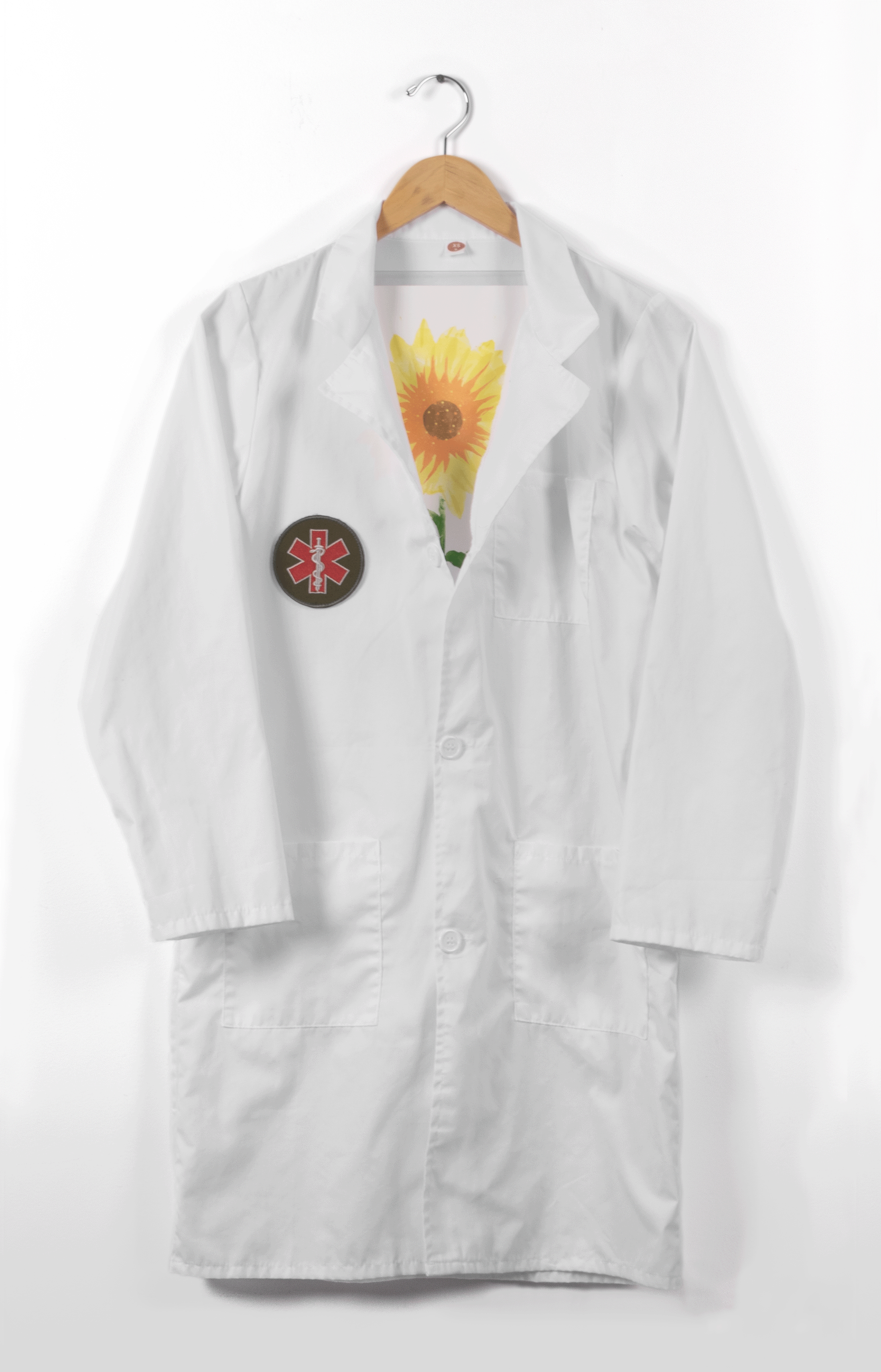Variation #19
By KS Lack
Print: Variated Edition 13/18
Frame: medical coat
If the military is the bulwark protecting Ukraine from the Russian onslaught, then the medical personnel are the pillars that keep it from collapsing. Without their dedication and service, the war would have already been lost.
There are three main stages where frontline medics are utilized: combat medic stations, stabilization points, and advanced medical centers. Like the soldiers they support, Ukrainian combat medics have had to contend with supply shortages, forcing them to be resourceful.(A) Many of the combat ambulances are actually vans and SUVs retrofitted with emergency care equipment. Heated blankets, portable infusion heaters, and portable defibrillators are just a few examples of low-tech gear that have proven surprising effective in saving lives.
Their work is made immeasurably harder by the fact that combat medics themselves have become targets, despite this being an international war crime. Russian troops use drones to attack medical units, specifically targeting first responders in so-called “double-tap” attacks, which aim at rescuers as they assist the wounded. Russian missile strikes have been known to target vehicles marked with a red cross as they transport the injured to stabilization points. These attacks do more than murder first responders: they force the medics to stay hidden, unable to tend the wounded until darkness falls. Countless lives have been lost as a result.
All medical professionals—no matter where they are in Ukraine—are facing immense levels of disaster and trauma. When missiles target civilians, every backyard can become a front line in an instant. Like the combat medics, the healthcare community throughout Ukraine is being deliberately targeted by Russian aerial attacks. The World Health Organization has recorded close to 2,000 attacks on healthcare facilities and providers since the start of the full-scale war, many of them double-tap attacks.
Although Ukraine is doing an admirable job of maintaining care under such a relentless assault, the system is in constantly on the verge of collapse. Fundraising has become crucial to preventing operations from being completely overwhelmed. Humanitarian organizations such as Razom for Ukraine, MOAS, Doctors without Borders and the Hospitallers, have raised funds to supply everything from armored ambulances to rehabilitation centers for amputees and children’s trauma care.(B,C,D)
But much more help is needed. The physical and emotional suffering Russia is inflicting upon the Ukrainian people is difficult to comprehend from an outsider’s perspective. For Ukraine to have any chance of healing, the nation will need the help of its medical professionals for decades to come. Even when the fighting stops, this war will not end for them anytime soon.
A) For more on the Ukrainian military and their innovations in warfare, see Variations #16 and #21.
B) All of the proceeds from this project will be donated to Razom for Ukraine.
C) For more on landmines see Variation #22.
D) For more information on the damage done to Ukraine’s children, see Variation #1.
See below for further reading and background.
Modern Tools of Ukraine’s Combat Medics: What are They?, Ukraine World, 12 Aug 24.
‘Two Men Down’: For Ukrainian Medics, It Was Time to Move, The New York Times, 07 Jan 24.
A grim milestone on World Humanitarian Day: WHO records 1,940 attacks on healthcare in Ukraine since the start of the full-scale war, United Nations Ukraine, 19 Aug 24.
Razom Health, Razom for Ukraine.
Doctors Without Borders: Ukraine, Doctors Without Borders.
Urgent fundraising for armored vehicles!, Hospitallers, posted 31 May 24.


